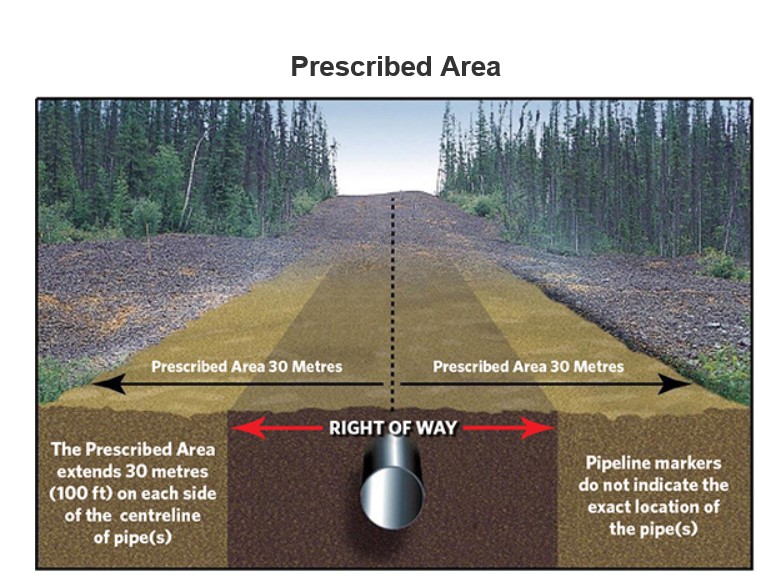
Fact Sheet: Conducting activities safely near federally-regulated pipelines
Fact Sheet: Conducting activities safely near federally-regulated pipelines [PDF 181 KB]
Reaching agreement for conducting activities near pipelines and determining how costs are managed
Those who plan to conduct certain activities near federally-regulated pipelines (within the prescribed area) are required to confirm the location of pipelines and obtain written consent from the pipeline company prior to undertaking the activity.
- Confirming the Location of Pipelines: a locate request must be done by either contacting a one-call notification centre, or by contacting the pipeline company directly.
- Obtaining Written Consent: this mandatory step can be done by contacting the pipeline company directly. In circumstances where parties are experiencing difficulty coming to an agreement, they can contact the Canada Energy Regulator (CER) for assistance.
Damage Prevention Framework
- Under the damage prevention framework those planning to undertake activities near the pipeline, the pipeline company, and the CER each have a role in ensuring work near federally-regulated pipelines is safe.
- The Canadian Energy Regulator Act (CER Act) and the associated Damage Prevention Regulations (DPRs) set out the responsibilities of anyone planning to undertake activities within the prescribed area, or cross a pipeline, and of pipeline companies.
Activities that require authorization
- The following activities require authorization:
- conducting an activity that would cause a ground disturbance, or the construction of a facility across, on, along or under a pipeline, within the prescribed area; and
- the operation of a vehicle or mobile equipment across a pipeline (crossing a pipeline).
Reaching agreement for activities near a pipeline and apportionment of associated costs
- The CER encourages pipeline companies and anyone planning to conduct an activity near a pipeline to work together to reach agreement regarding activities within the prescribed area, or for crossing a pipeline. The regulations require that the written consent provided by the pipeline company outlines how to safely carry out activities near the pipeline.
- If there are costs directly incurred as a result of the authorized construction or disturbance, the parties are encouraged to reach agreement on how these costs will be addressed.
- If parties are not able reach an agreement on either of these elements they can seek assistance from the CER.
Obtaining assistance from the CER
- There are two approaches available to manage disagreements, both of which can accessed by filing a section 335 application:
- Alternative Dispute Resolution (ADR): ADR is a voluntary, interest-based, and confidential way for parties to jointly resolve disputes. It includes negotiation, facilitation and mediation. The CER encourages parties to use ADR to resolve issues to explore and understand interests, and develop acceptable solutions where possible.
- Adjudication (Hearing and Decision): if a dispute cannot be resolved through ADR, or if the parties do not wish to participate in ADR, parties can request the Commission to conduct a hearing to determine the matter.
Where to go for more information
- CER Website
- Phone: 403-292-4800
- Toll Free: 1-800-899-1265
- Follow us on Twitter @CER_REC
- Complaint Resolution Team:
Canada Energy Regulator
210-517 10 Ave SW
Calgary AB T2R 0A8

- Date modified:
